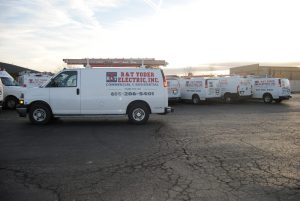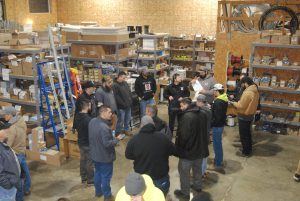Maintaining a comfortable temperature and indoor air quality is critical for homes and businesses. Heating, ventilation, and air conditioning (HVAC) systems make this possible by controlling the temperature, airflow, and humidity of interior spaces.
But how exactly does HVAC work its magic? Here is a comprehensive overview of the key components and processes that allow HVAC equipment to heat, cool, ventilate, and control your indoor climate.
The Heating Process
HVAC systems provide heating in colder months to raise indoor air to a desired temperature. There are a few main types of heating systems:
- Furnaces: Furnaces use gas, propane, or heating oil to produce heat. They do this by burning fuel in a combustion chamber. The warm air produced rises into ductwork and circulates throughout a building. Furnaces are efficient and effective for heating larger spaces.
- Electric Heaters: Electric heating elements directly convert electrical current into radiant heat. Electric furnaces, baseboard heaters, and space heaters all use this principle. While efficient, operating costs can be higher compared to gas.
- Heat Pumps: Heat pumps move heat instead of directly producing it. They extract latent heat from outdoor air and pump it indoors through refrigeration and evaporation. This method makes them more energy efficient than furnaces.
The Cooling Process
Air conditioners and heat pumps provide the cooling capabilities of HVAC systems. They create cool air via the refrigeration cycle, which uses refrigerants to absorb and remove heat:
- Evaporation: refrigerants with low boiling points evaporate easily at low pressures. As they evaporate, they absorb large amounts of heat, cooling the surrounding environment.
- Compression: The refrigerant gas is then compressed, raising its temperature. This warm gas circulates through condenser coils.
- Condensation: As the hot gas passes through the coils, it condenses back to a liquid state, expelling the absorbed heat outside.
- Expansion: The pressurized liquid then passes through an expansion valve. The dramatic drop in pressure causes rapid evaporative cooling.
The constant evaporation, compression, condensation, and expansion collect indoor heat and push it outdoors, leaving cooled air behind.
Ventilation Processes
Proper ventilation brings in outdoor air and removes stale indoor air. Ventilation is essential for oxygen circulation and eliminating pollutants, odors, and excess humidity.
HVAC systems employ dedicated ventilation fans and ducts specifically for circulating air. Intake vents draw fresh air in, while exhaust vents expel indoor air out. Whole house fans can assist with air exchange. Added ventilation improves overall indoor air quality.
Climate Control and Regulation
The final core aspect of HVAC operation is climate regulation. Sensors, thermostats, and controllers monitor conditions and communicate with HVAC components to achieve desired temperatures and humidity levels:
- Thermostats: Monitor air temperature and communicate heating or cooling needs. Advanced smart thermostats learn usage patterns and optimize efficiency.
- Humidistats: Measure and regulate indoor humidity. Added humidity control improves comfort and prevents excess moisture.
- Dampers: Control duct and vent airflow. Automated dampers ensure efficient air circulation and even temperatures.
- Zoning: Dividing spaces into distinct zones allows individual temperature control through zone dampers and multiple thermostats.
With climate sensors and automated regulation, HVAC systems maintain perfect conditions tailored to occupant preferences.
By leveraging these core processes, HVAC equipment provides comprehensive climate control. For expert installation, maintenance, or repairs, the experienced technicians at Yoder HVAC have the skills and knowledge to optimize your home or building’s heating, cooling, ventilation, and beyond. Contact us today to learn more!








